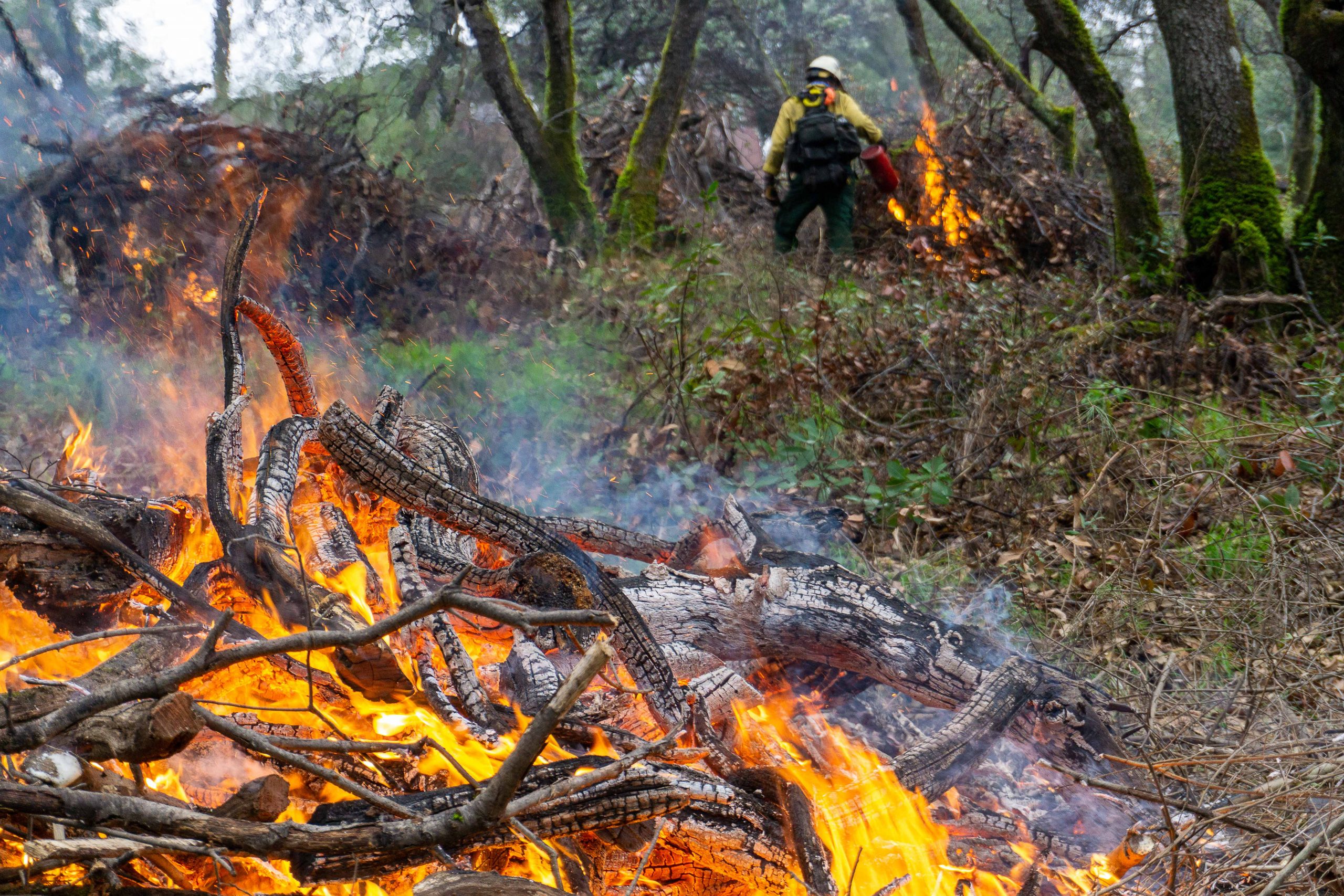 In areas that are too steep to be mulched or chipped, burn piles must be created to be burned at a later date.
In areas that are too steep to be mulched or chipped, burn piles must be created to be burned at a later date.
Placer Resource Conservation District (Placer RCD) was awarded $2.1M by CAL FIRE which will enable them to continue offering 2 critical programs that increase the overall wildfire resiliency in Placer County. The grants will provide 3-years of funding for both the Placer County Chipper Program and the Prescribed Burning on Private Lands (PBPL) Program.
“We are so grateful for the opportunity to continue these vital programs that assist residents in creating defensible space to protect their homes and neighborhoods from the threat of wildfire.” stated Sarah Jones, executive director of Placer RCD.
The Placer County Chipper Program is a cost-share program that provides low-cost residential shipper services for Placer County residents, incentivizes fuels reduction, and promotes defensible space adherence and fire prevention activities. To request a chipper service, visit placerrcd.org/chipper and review the program requirements.
The Prescribed Burning on Private Lands (PBPL) Program supports landowners in reducing fuel loads on private property through prescribed fire workshops, technical assistance, and education. Barriers to prescribed fire use on private lands must be addressed to achieve fuel reduction goals statewide and regionally. This program aims to break down those barriers by encouraging the safe, legal, and ecologically beneficial use of prescribed fire to reduce the threat of catastrophic wildfires and promote ecosystem resiliency.
Placer RCD is dedicated to assisting the community by reducing barriers and improving access to resources and tools for fire-resilient communities, forests, and working lands. When conducted in a manner that generates low-severity impacts, prescribed burning offers a myriad of benefits including fuels reduction, increased soil water infiltration, native plant stewardship, invasive species management, improvements wildlife habitat, and soil carbon sequestration.
Placer County Chipper Program and Prescribed Burning on Private Lands Program are part of California Climate Investments, a statewide program that puts billions of Cap-and-Trade dollars to work reducing GHG emissions, strengthening the economy, and improving public health and the environment– particularly in disadvantaged communities. The Cap-and-Trade program also creates a financial incentive for industries to invest in clean technologies and develop innovative ways to reduce pollution. California Climate Investments projects include affordable housing, renewable energy, public transportation, zero-emission vehicles, environmental restoration, more sustainable agriculture, recycling, and much more. At least 35 percent of these investments are located within and benefiting residents of disadvantaged communities, low-income communities, and low-income households across California. For more information, visit the California Climate Investments website at: www.caclimateinvestments.ca.gov.
